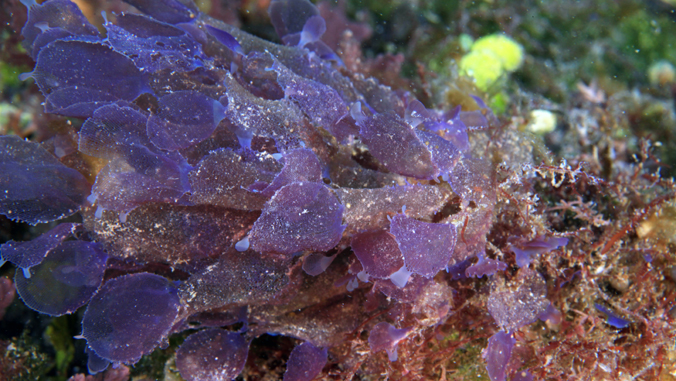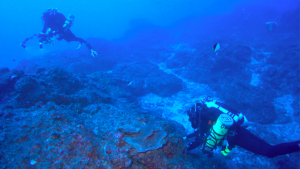
Collecting, identifying, describing and naming new species of seaweed that live in deeper waters off Hawaiʻi is the focus of a new University of Hawaiʻi at Mānoa research project that received a $892,290 grant from the National Science Foundation.

The target area is called the mesophotic zone, which is an extremely low-light environment. In Hawaiʻi, the mesophotic zone extends approximately 30 to 150 meters deep (10-story building to 1.5+ football fields) off Hawaiʻi’s coastlines. The organisms, such as seaweeds, that live in these zones are poorly known. A previous study in this habitat found that 52% of the seaweed species were new to science. This research will mark the first investigation into genome-level adaptations of red, green and brown seaweeds that live in the low-light environment of the mesophotic zone.

Led by principal investigator Alison Sherwood (School of Life Sciences professor and College of Natural Sciences acting dean and associate dean), and co-principal investigator Gernot Presting (Department of Molecular Biosciences and Bioengineering professor, College of Tropical Agriculture and Human Resources), this project will add to biodiversity records data, mesophotic genomic resources and herbarium (dried plant) collections, and the discovery of new species of seaweed in Hawaiian waters. Mesophotic seaweeds will be collected through a collaboration with NOAA researchers.

“Characterizing and describing these species is important for developing a greater understanding of the distribution of marine organisms across the Pacific, for tracking invasive species, and contributing to the larger goal of understanding global biodiversity,” Sherwood said. “While little is known about the seaweeds now, we hope our research will find out how these organisms are able to grow and thrive in the low light environment of the mesophotic zone, and shed light on the many endemic species that inhabit this depth range.”
Hawaiian names for new species of seaweeds will be developed through an ongoing partnership with the NOAA Cultural Working Group, which has already resulted in names for a number of new Hawaiian seaweed species.
The project will also train the next generation of algal biologists for jobs by exposing them to the most up-to-date DNA sequencing techniques, training in herbarium curation, genomics, bioinformatics, and ecological and evolutionary analyses.
The researchers will showcase their results through outreach events, scientific conferences and peer-reviewed publications. Samples of the newly discovered seaweed species will also be archived by the Bishop Museum and displayed through a continuously updated exhibit dedicated to Hawaiian mesophotic seaweeds.

